Many small to midsize eCommerce businesses have a love-hate relationship with Google Shopping.
They love Google Shopping for profitable sales from customers who are looking specifically for their products.
However, many question whether or not Google simply wants you to spend more money on ads regardless of how much profit you make.
Is Google trying to waste your ad spend?
Google Shopping has been around in its current pay to play version since 2012. Since then, they have invested heavily into making it easier to get advertisers started on Google Shopping.
Their Smart Campaigns and direct integration with Shopify has made it super easy for small to midsize advertisers to start on Google Shopping.
However, Google's improvements do not make you more profitable!
It actually makes them more money by forcing you to spend on low-quality keywords... just like how Cable TV companies force you to pay for channels you don’t watch and don’t want.
Take Google Shopping Smart Campaigns as an example, Google simply takes your products and your ROAS goal and then does whatever they want.
They can show your ads on Google Shopping, Google Display Network, YouTube, or Gmail for whatever search term they think is relevant.
However, there is a BIG difference in someone searching for “light bulbs” and someone searching for "60w vintage LED light bulbs"
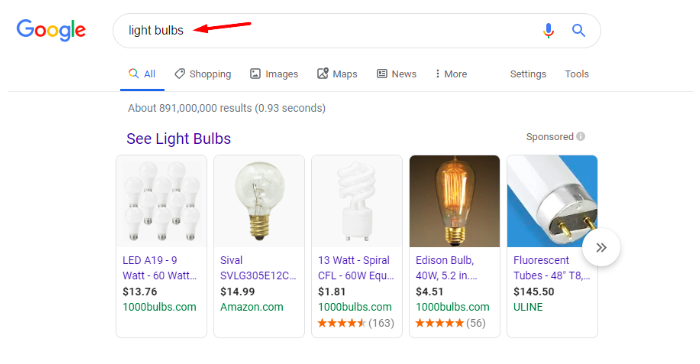
Google Search results for "light bulbs" vs "60w vintage LED light bulbs"
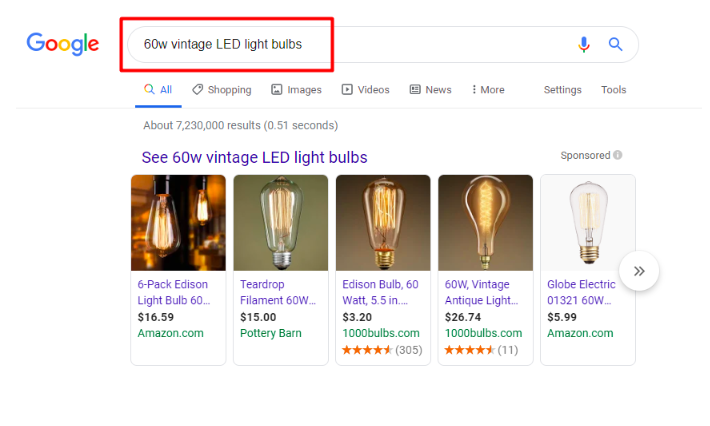
The difference: The Customer's
Intent to Purchase.
Generic terms like "light bulbs" are low purchase intent, and are in the Awareness or Interest stage in the customer journey. Terms in these stages typically have a lower conversion rate and lower ROI because customers are just browsing.
Specific terms, such as, "60w vintage LED light bulbs" are high purchase intent. They are in the Evaluation or Purchase stage. Terms in these stages are your "home run terms", typically having the highest conversion rate and highest ROI. Customers at this stage know exactly what they want, and are ready to buy.
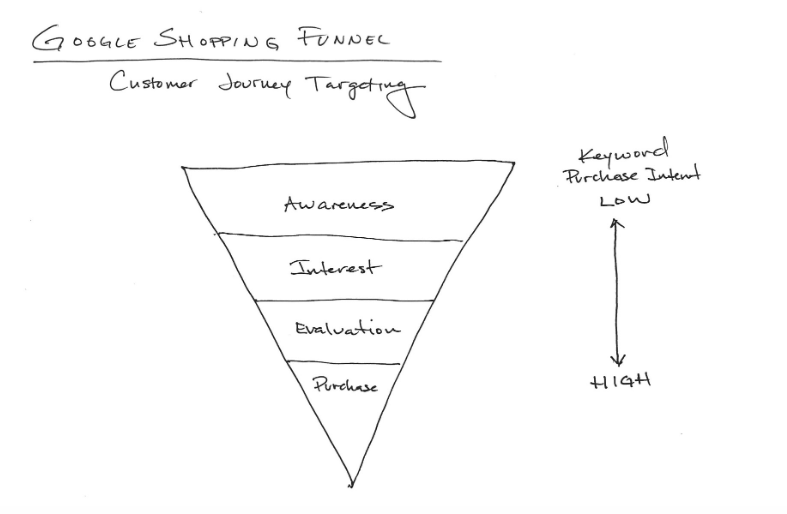
Customer Journey Targeting for Google Shopping Funnels
If you are selling "60w vintage LED light bulbs", Google does not allow you to directly target people using terms like "vintage LED light bulbs".
So why doesn't Google allow you to target and bid on these specific, high intent terms, in your Google Shopping campaigns?
The Answer: They want you to trust them and allow them to show your products for whatever keywords they think are relevant to your product titles and descriptions.
Yes, you can currently adjust bids per product, but wouldn’t it make more sense to adjust bids per keyword?
What if you were a small advertiser that only sold vintage light bulbs? You wouldn't have the budget to go after all the "general light bulb" terms. Instead, why not use that budget to spend on specific, high intent terms?
Even Amazon allows you to do this on their ad platform. Could you imagine the hysteria if Amazon all of a sudden said, “Sorry third party sellers, we no longer allow you to control your ad keywords. You just have to trust that we will show your ads for what we think is relevant.” Amazon sellers would go crazy!
Then why does Google do this? ... the simple answer is that they make more money when everyone spends!
Again, it is sort of like Cable TV.
According to a recent study by Cordcutting.com, the average man reported watching 12 channels, while the average woman only watched 10. That's 5.7% of the nearly 200 channels in most cable packages. That makes it not very surprising that 81.9% of those surveyed felt they "wasted money on their TV bill."
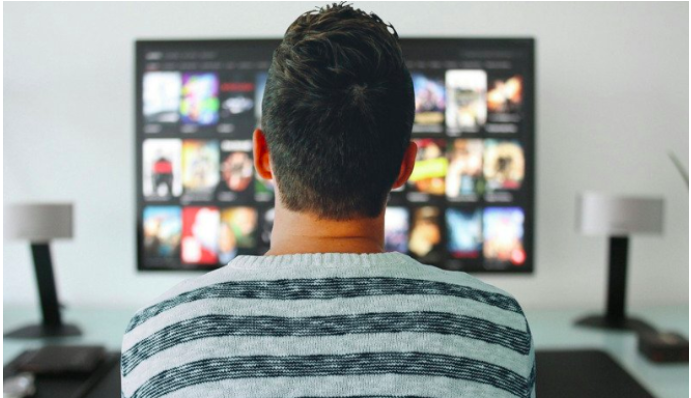
Consumers wasting money on their Cable TV bill
It is the same with Google Shopping, Google makes more money when every advertiser spends money on low-quality traffic and high-quality traffic.
Imagine if you could only pay for the 12 channels you actually watch. How much money would that save you?
Or in the case of Google Shopping... how much money would you save if you just spent money on your most profitable keywords and traffic?
Or better yet... how much could your sales and profit grow, if you shifted that wasted ad spend to traffic that uses high purchase intent keywords?
Fortunately, there are some ingenious advertisers that found a way to beat Google!
I happened to stumble upon an eCommerce conference in Germany that had a presenter that outlined a new strategy for Google Shopping. He used a Google campaign hack to isolate and target three groups of keywords for his Google Shopping campaigns.
It was a great idea... it allows you to create 3 different segments of keywords and diversify bids in each of those groups.
This campaign hack allowed me to increase my bids and shift my ad spend to those best terms. It also allowed me to cut bids and ad spend on the low-quality terms.
I first tested this on a client's account that was selling wedding favors. They had been struggling due to high competition from larger companies with bigger budgets. I analyzed all their past search term data and segmented all the traffic into three buckets… High ROI, Mid ROI, and Low ROI.
Then, I raised bids on the high ROI terms and lowered bids on the low ROI terms, and within a few weeks, gross profit sharply increased. My client went from averaging $4k in profit per week to averaging $10k per week with some weeks as high as $12k in profit.
The result was that we no longer had to go head to head with the big companies and settle for average ROI. We could finally “out market” other advertisers and drive more profit.
That is when I realized the key to winning on Google Shopping was using this keyword campaign hack, which I call Keyword Targeted Campaign Strategy.
I continued using this Keyword Targeted Campaign Strategy for several years while getting better and better results for my clients.
Meanwhile, Google has made very little updates or changes to their Google Shopping campaigns. They still do not allow advertisers to directly target keywords.
They simply want advertisers to show Google Shopping ads for whatever terms Google thinks is relevant to their product titles and descriptions.
Well, I ended up getting frustrated with that, so we decided to create our own Google Shopping AI software that takes the original keyword hack and puts it on steroids!
It goes above and beyond the previously mentioned three groups by creating unlimited groups with unlimited keywords... each with their own bids.
We call this Breakout Campaign Method™.
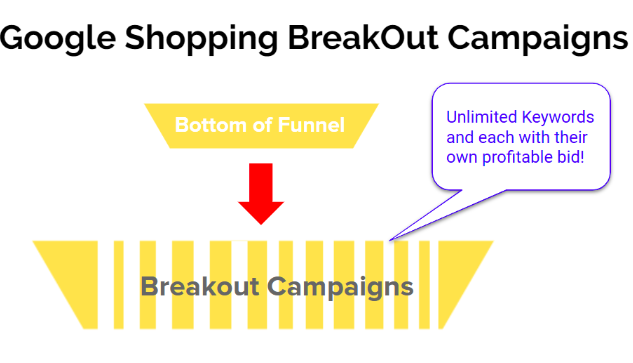
Separating keyword campaigns using the Breakout Campaign Method™
By creating a separate campaign or ad group for each individual keyword, we can set the optimal bid for each keyword. Now we can really win on Google Shopping and drive significantly better results for our clients.
Back to the cable TV example… if Google Shopping was cable TV, Google would want you to pay for every station and just settle for that.
The Breakout Campaign Method™ allows you to pay for only the channels you want to watch. In terms of your Google Shopping campaigns, the result is unlimited single keyword campaigns, maximum control, and higher profits.
Within the past few years, we’ve applied our Breakout Campaign Method™ and software to grow the sales and profits of over 1,000 small to midsize Shopify businesses.
We’ve helped several small advertisers go from very little sales to over seven figures per year in sales just from Google Shopping.
We’ve also helped several midsize advertisers increase their profits from Google Shopping by 60% on average.
More importantly, we are helping small to midsize eCommerce businesses beat Google and large advertisers and allowing them to win on Google Shopping!
To learn how much your profits can increase with this software, here is a video that shows you the Breakout Campaign Method™ in action.
Easton Digital is a marketing agency made up of a team of Google Shopping experts, marketers and developers who use eCommerce focused strategies to grow sales, minimize your ad spend, and give you the highest ROI for small to midsize businesses.
